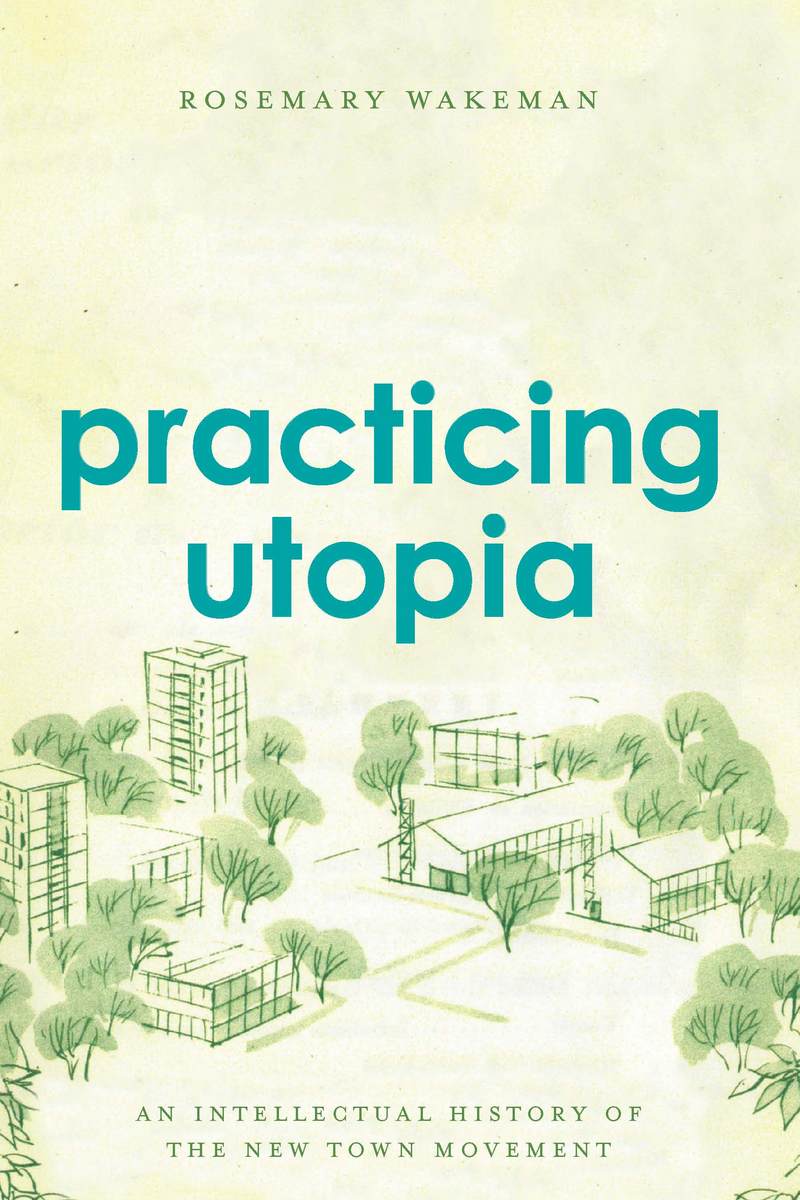Practicing Utopia
An Intellectual History of the New Town Movement
University of Chicago Press, 2016
Cloth: 978-0-226-34603-8 | Electronic: 978-0-226-34617-5
DOI: 10.7208/chicago/9780226346175.001.0001
Cloth: 978-0-226-34603-8 | Electronic: 978-0-226-34617-5
DOI: 10.7208/chicago/9780226346175.001.0001
AVAILABLE FROM
University of Chicago Press (cloth, ebook)Amazon Kindle
Apple Books
Barnes & Noble Nook
Brytewave (CafeScribe-Follett Higher Ed)
DeGruyter Multi-User Ebook Program
EBSCO eBooks (formerly NetLibrary)
Google Play
Kno
Kobo
University Press Scholarship Online (UPSO)
ABOUT THIS BOOKAUTHOR BIOGRAPHYREVIEWSTABLE OF CONTENTS
ABOUT THIS BOOK
The typical town springs up around a natural resource—a river, an ocean, an exceptionally deep harbor—or in proximity to a larger, already thriving town. Not so with “new towns,” which are created by decree rather than out of necessity and are often intended to break from the tendencies of past development. New towns aren’t a new thing—ancient Phoenicians named their colonies Qart Hadasht, or New City—but these utopian developments saw a resurgence in the twentieth century.
In Practicing Utopia, Rosemary Wakeman gives us a sweeping view of the new town movement as a global phenomenon. From Tapiola in Finland to Islamabad in Pakistan, Cergy-Pontoise in France to Irvine in California, Wakeman unspools a masterly account of the golden age of new towns, exploring their utopian qualities and investigating what these towns can tell us about contemporary modernization and urban planning. She presents the new town movement as something truly global, defying a Cold War East-West dichotomy or the north-south polarization of rich and poor countries. Wherever these new towns were located, whatever their size, whether famous or forgotten, they shared a utopian lineage and conception that, in each case, reveals how residents and planners imagined their ideal urban future.
In Practicing Utopia, Rosemary Wakeman gives us a sweeping view of the new town movement as a global phenomenon. From Tapiola in Finland to Islamabad in Pakistan, Cergy-Pontoise in France to Irvine in California, Wakeman unspools a masterly account of the golden age of new towns, exploring their utopian qualities and investigating what these towns can tell us about contemporary modernization and urban planning. She presents the new town movement as something truly global, defying a Cold War East-West dichotomy or the north-south polarization of rich and poor countries. Wherever these new towns were located, whatever their size, whether famous or forgotten, they shared a utopian lineage and conception that, in each case, reveals how residents and planners imagined their ideal urban future.
AUTHOR BIOGRAPHY
Rosemary Wakeman is professor of history and director of the Urban Studies Program at Fordham University. She is the author of The Heroic City: Paris 1945–1958, also published by the University of Chicago Press. She lives in New York.
REVIEWS
“Practicing Utopia is an ambitious and masterly historical synthesis, erudite and lucid, written in a lively and engaging style. Drawing on primary sources from around the globe as well as recent architectural and planning history, the book is an original and syncretic intellectual history of the New Town movement.”
— June Williamson, City College of New York“A must-read for anyone interested in the intellectual underpinnings of the New Towns movement. Practicing Utopia is a convincing analysis of the intellectual background of one of the twentieth century’s most influential city models. This is a fascinating, elegantly written book.”
— Florian Urban, Mackintosh School of Architecture, Glasgow School of Art“After the Second World War, a new town movement projected urban utopianism across the globe. Impressive in its scope and fulfilling in its details, Practicing Utopia is a fascinating survey of this moment in worldwide urban development. The impulse to begin cities anew lives and no urbanist true to the label should avoid Wakeman’s book.”
— Robert Beauregard, Columbia University“A landmark history.”
— Times Higher Education“In her lively and nuanced account of the brief passion for ‘new towns,’ she demonstrates how two decades of town planning turned wishful thinking into pristine, uncompromising urban developments in the face of Cold War maneuvering, political instability, and vexed economics.”
— Times Literary Supplement“As in all good history. . .Practicing Utopia shows the resonances between past and present clearly. . . .This book is a tremendously valuable one for the student or scholar with an interest in the urban and well worth a place in the library of any institution concerned with urban studies.”
— Urban StudiesTABLE OF CONTENTS
List of Illustrations
Acknowledgments
Introduction - Rosemary Wakeman
One / The Origins of the New Town Movement - Rosemary Wakeman
Two / The Futurology of the Ordinary - Rosemary Wakeman
Three / Exporting Utopia - Rosemary Wakeman
Four / Cybernetic Cities - Rosemary Wakeman
Five / Towns of Tomorrow - Rosemary Wakeman
Six / Architecture for the Space Age - Rosemary Wakeman
Conclusion: New Towns in the Twenty-First Century - Rosemary Wakeman
Notes
Selected Bibliography
Index
